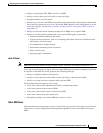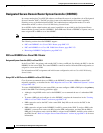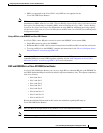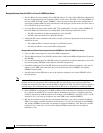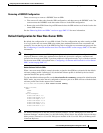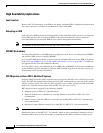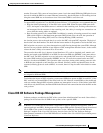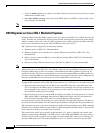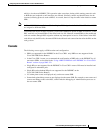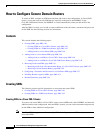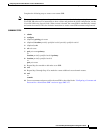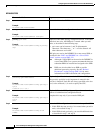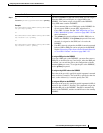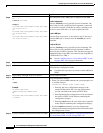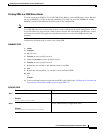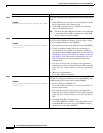
Configuring Secure Domain Routers on Cisco IOS XR Software
Information About Configuring Secure Domain Routers
SMC-139
Cisco IOS XR System Management Configuration Guide
which is also the new DSDRSC. This operation takes some time, during which routing protocols such
as BGP that use loopback or null interfaces are affected. Similarly, tunnels and bundles must also be
recreated, affecting protocols such as MPLS. As a result, there is a drop in traffic in the default or owner
SDR.
Note In Cisco IOS XR Software Release 3.3.0 and higher, DSC migration is disabled if the RPs in both LCCs
are assigned to different SDRs.
To minimize the impact of DSC migration, create named SDRs that operate on DRP in each LCC. If the
DSC rack fails, any named SDRs on the failed rack also fail. However, named SDRs on the unaffected
rack can continue through DSC migration without any interruption in service. If the failure in the DSC
rack affects only the RP cards, the named SDR in the affected rack cannot function after the RPs on that
rack go down.
Caveats
The following caveats apply to SDR creation and configuration:
• DRPs are supported for the DSDRSC in the Cisco CRS-1 only. DRPs are not supported in the
Cisco XR 12000 Series Routers.
• In the Cisco CRS-1 router, we recommend the configuration of DRP pairs as the DSDRSC for all
non-owner SDRs, as described in the “Using a DRP or DRP Pair as the DSDRSC in a Cisco CRS-1
Router” section on page SMC-132.
• Single RPs are not supported for the DSDRSC in Cisco CRS-1 routers. RPs must be installed and
configured in redundant pairs.
• Single RPs and redundant RP pairs are supported for the DSDRSC on the
Cisco XR 12000 Series Routers.
• LC admin plane events are displayed only on the non-owner SDR.
• Some admin plane debug events are not displayed on the owner SDR. For example, a non-owner card
cannot send debug events to the DSC, which limits the debugging of Administration processes to
the non-owner SDR.



